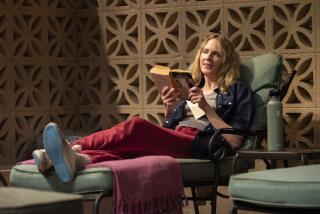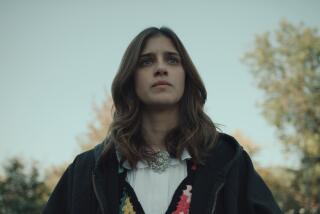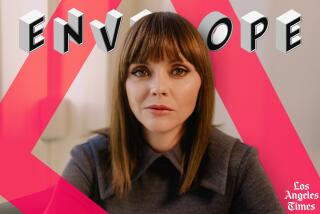Christina Ricci ponders the cold, hard truth of ‘After.Life’
Playing a dead person in the creepy thriller “After.Life,” which opens in theaters Friday, was a painful experience for Christina Ricci.
The waif-like actress spends much of the movie reclining in a skimpy red slip -- and sometimes nothing at all -- on a cold porcelain table in a mortician’s preparation room.
“My spine and the back of my hips got bruised on the first day,” explains the former child star of “Mermaids” and “The Addams Family,” who had flown in to L.A. from London where she’s been making the period drama “Bel Ami” with everyone’s favorite vampire hunk, Robert Pattinson.
“I had to lie back down on the bruises,” she says of her many scenes supine on that table. “Finally, the doctor came and he said, ‘All I can do is give you painkillers.’ The crew tried to warm the table for me. Someone brought in an electric blanket. . . . But it was November and we were in a poorly insulated warehouse in New York City. I got sick.”
Clearly, Ricci is no stranger to suffering for her art. This is the actress who spent large chunks of time half naked and chained to a radiator for 2006’s “Black Snake Moan.” And “After.Life” was no less demanding. Co-written and directed by first-time feature filmmaker, Agnieszka Wojtowicz-Vosloo, the film casts Ricci as an unpleasant schoolteacher named Anna, who has a difficult relationship with longtime beau Paul (Justin Long). She also takes a lot of pills -- purportedly for headaches -- and is prone to nosebleeds in the shower.
Anna comes to the attention of the efficient and creepy mortician Eliot (Liam Neeson) when she attends a funeral. And that’s when the movie takes a turn for the weird. After she has a fight with Paul, a weepy Anna appears to die in a car crash.
Or does she?
When she wakes up she sees a white light; not the warm, inviting one described by those who believe they have brushed up against the afterlife, but a cold, sterile glare from the fluorescent light in the preparation room at Eliot’s mortuary.
She insists she’s still alive. Eliot, who says that he can communicate with the dead, tells Anna she’s fighting her demise and begins to prepare her body. She, of course, resists.
Despite the frightening nature of the film, Ricci hesitates to call “After.Life” a horror movie. “For me, the script read much more like a sort of character piece,” she explains. “I kind of missed the scariness of it because I was sort of taken in by this question of death and if you have feelings after you’re dead. If I woke up tomorrow dead, how would I feel? That’s what I talked to Agnieszka about when I first met her.”
Ricci liked the fact that she got to “sit in the middle of what it would be like to be dead. Anna has to believe at a certain point she is. I think in the beginning she believes it too.”
The actress put her trust in Neeson, who made the film before the death of wife Natasha Richardson a year ago from a ski accident.
“When you are in a situation with another actor this dynamic starts to exist where you have to trust and you have to give over to them,” she says. “I think that relationship is very organic to the situation.”
When making a movie, Ricci doesn’t socialize much, preferring to ruminate over her parts in her hotel room. Eventually, the characters begin to invade her psyche.
“Anna was really creeping in one morning when I woke up and looked in the mirror and said, ‘Oh, my God, I am so pale. I have gone Goth!’ ”
More to Read
Only good movies
Get the Indie Focus newsletter, Mark Olsen's weekly guide to the world of cinema.
You may occasionally receive promotional content from the Los Angeles Times.











